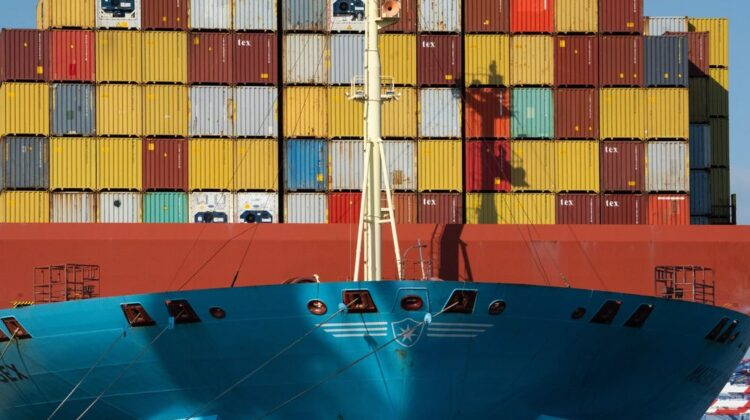
Get Ready for Years of Chaos in Container Shipping
LONDON : First there were the queues at the twin ports of Los Angeles and Long Beach, which left as many as 40 container vessels awaiting a berth in early February amid a flood of traffic. Combined volumes at the terminals hit a record of 1.9 million containers in May, nearly double the Covid-19 low in March 2020.
Then the Ever Given, a 20,124-container behemoth, got stuck in the Suez Canal for nearly a week, delaying hundreds of ships on their way between Asia and Europe. Now, the port of Yantian in the Chinese city of Shenzhen is joining the fun, thanks to a coronavirus outbreak that’s thrown out schedules for the entire month.
High Seas
The cost of moving a 40-foot container from Shanghai to Rotterdam has topped $10,000
If you think this is mostly a bit of local bother that will smooth itself out as the dislocations of a reawakening global economy ease off, you might be in for a shock. The factors that have driven Asia-Europe container rates to record levels of more than $10,000 per 40-foot box aren’t simply a temporary coordination problem. Returning to a semblance of normality could take years. The container shipping industry is usually such a well-oiled machine that we barely notice it. Vessels carrying 10,000 containers can arrive at dawn and depart with new cargo by sunset. Rates have at times drifted so low that in early 2016 you could shift a metric ton of goods from Shanghai to Rotterdam for about $10 — and even then, the world’s biggest shipping line, AP Moller-Maersk A/S, was able to turn a modest operating profit.
The flip side of that is that when things go wrong, they go seriously wrong.
Boxer Rebellion
Container rates for exports from China are surging ahead of return prices as the shipping industry deals with a dearth of boxes in Asia.
Part of the problem has been that containers aren’t in the right places. In global terms, trade enjoyed a remarkably short and sharp pandemic. By September last year, volumes were already running ahead of their seasonally adjusted levels in January and February, as demand for medical equipment and spending on durable goods picked up in rich countries.
Trying to make all those deliveries on time meant that many vessels started making their return journeys empty, saving a few precious hours that would normally be spent picking up vacant boxes to ship back to China. That’s resulted in a glut of containers in European and North American ports and a shortage in Asia, pushing freight rates to astronomical levels on export routes.
Those high prices — and the sharp differentials with the cost on the return route — can be seen as price signals that will push the industry to rebalance itself. That already seems to be having an effect. More than 360,000 empty containers were shipped from the port of Los Angeles last month, roughly double usual seasonal rates.
Let the Good Times Roll
Trade volumes haven’t just recovered from the pandemic. They’re booming
The bigger issue will come once the world’s boxes are where they need to be. Covid dealt a hammer-blow to global merchandise volumes, but the slowdown had been going on for some time before that, thanks to former President Donald Trump’s trade wars on the rest of the world. Traffic had been trending downward ever since late 2018, and only regained its previous levels at the start of this year.
As a result, the freight industry has been cutting back on investment in anticipation of a global economy in which trade would be playing a smaller role. Since March 2019, Maersk’s capital investment has come to just $2.9 billion, not much more than it invested in a single quarter during 2014. That’s a problem that will take years of building new ships, berths and port loading cranes to fix.
Once upon a time, shipping lines might have been able to relieve the pressure by ordering their vessels to travel faster, increasing the capacity of the fleet by working it harder. Even that option is less available, though: The latest generation of mega-vessels save energy and costs by having top speeds of around 18 or 19 knots as opposed to 24 knots in the 2000s, Morgan Stanley analysts led by Carolina Dores wrote in a note last week. So there’s not much ability to pick up slack by steaming faster.
The shipping industry tends to be as up and down as the sea itself, so even this will correct in time. Analysts expect Maersk to make more profits this year than in the previous seven put together. Inevitably, that will lead to another orgy of shipbuilding, so that at some point down the line, the world will face a glut of container capacity like it did in 2016.
In the meantime, though, a world economy where trade is booming will be dependent on a shipping industry that never expected such luck. The chaos and costs on the high seas will eventually turn around. But, as with any big vessel, it’s going to take a while.
Source : Bloomberg.com

